Spider plants (Chlorophytum comosum) or otherwise known as airplane plants aren’t often affected by pests, but it can happen, particularly If the plant is overwatered, overfertilized, or has poor ventilation.
The most common spider plant bugs are mealybugs, aphids, fungus gnats, spider mites, and scale insects
Most of them can be eliminated by spraying the plant with insecticidal soap, synthetic insecticides, or neem oil, an organic insecticide.
Pesticide use is almost always unnecessary to control insect populations since the problem can be efficiently dealt with by a mix of prevention and biological control.
- Related article: Is Spider Plant Indoor Plant
It’s easy to prevent pests from ever attacking your spider plant, as keeping it in the right conditions will do most of the job.
1. Mealybugs
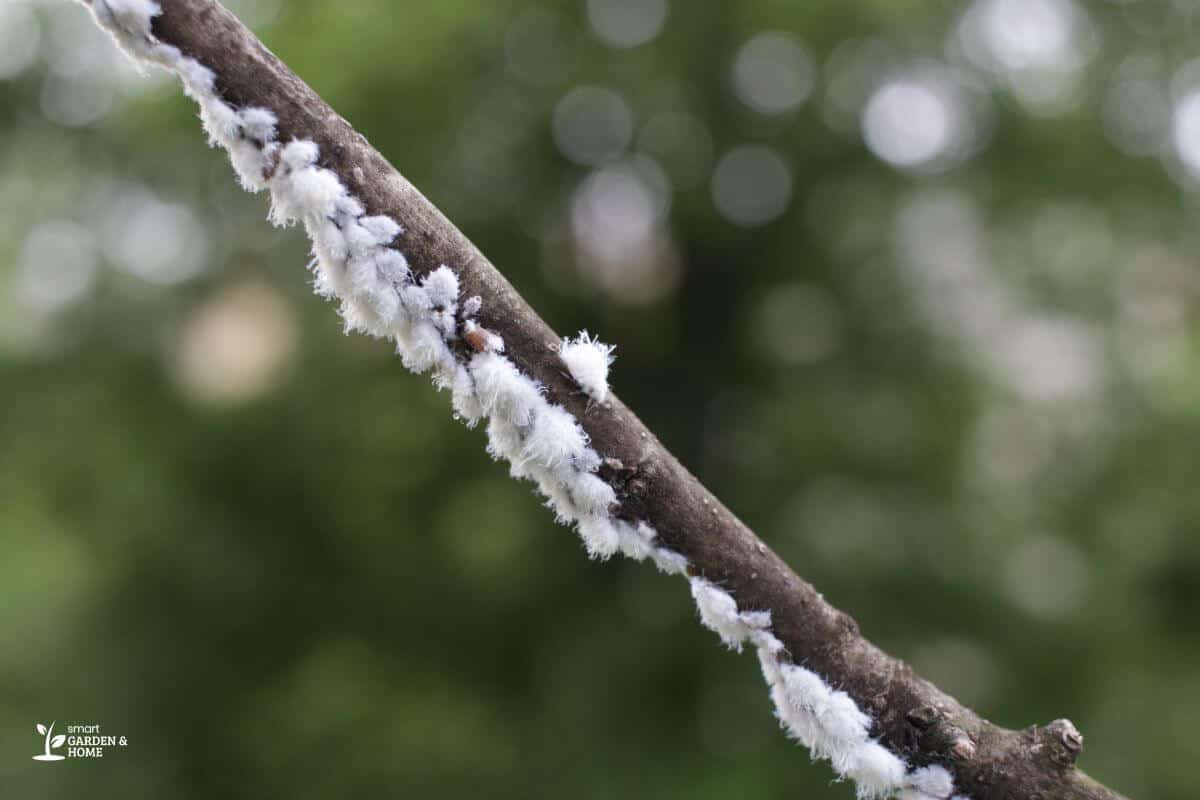
Mealybugs are some of the most common pests attracted to spider plants. These insects thrive in high humidity, so they will be drawn to your spider plant if the soil is constantly wet or saturated with water.
Spider plants are weaker in these very wet conditions, which makes them more vulnerable to attacks and illnesses.
Mealybugs survive by feeding on plant lymph, which can further weaken the plant. Moreover, the sweet substance that mealybugs secrete not only attracts ants but also encourages the formation of a sooty mold.
To treat small mealybug infestations, you can also use neem oil or insecticidal soap, which have the advantage of being organic and non-toxic products.
You can also use a cotton swab soaked in 70 percent isopropyl alcohol and place this in affected areas and on the pests themselves.
An effective method to control a larger population is biological control, which consists in introducing beneficial insects.
Some of the mealybugs’ natural predators you can use are mealybug destroyers, ladybugs, and lacewing larvae.
2. Aphids
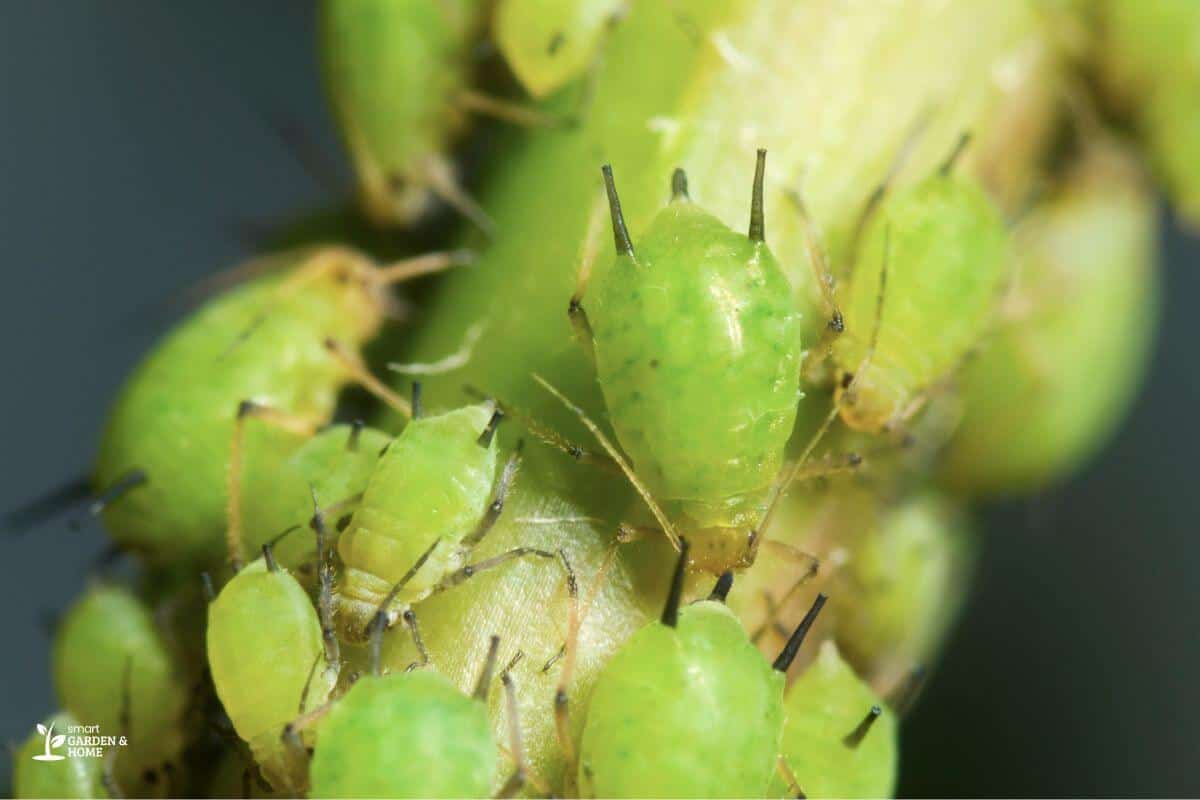
Aphids are related to mealybugs and they feed in much the same way. These sap-sucking insects rarely cause direct damage to spider plants, but they can infect your plant with deadly diseases, such as bacterial wilt.
Honeydew is a sweet, sticky substance that aphids excrete as they feed on plant juice. This substance is a source of food for most ants so they would try to farm aphids and keep them safe to have a continuous food supply.
Just like mealybugs, they thrive in humid conditions and overly wet soil is a main attraction for them.
Aphids are soft-bodied insects that can multiply efficiently and quickly overcome a plant as it spreads from one to another.
You would be happy to know that aphids are easy to get rid of when they are few.
Squishing them or blasting them with a strong stream of water can already do the trick. They are slow movers and it will take them a while to get back to your plant.
Other effective methods include using neem oil or insecticidal soap, just like with mealybugs.
3. Fungus Gnats
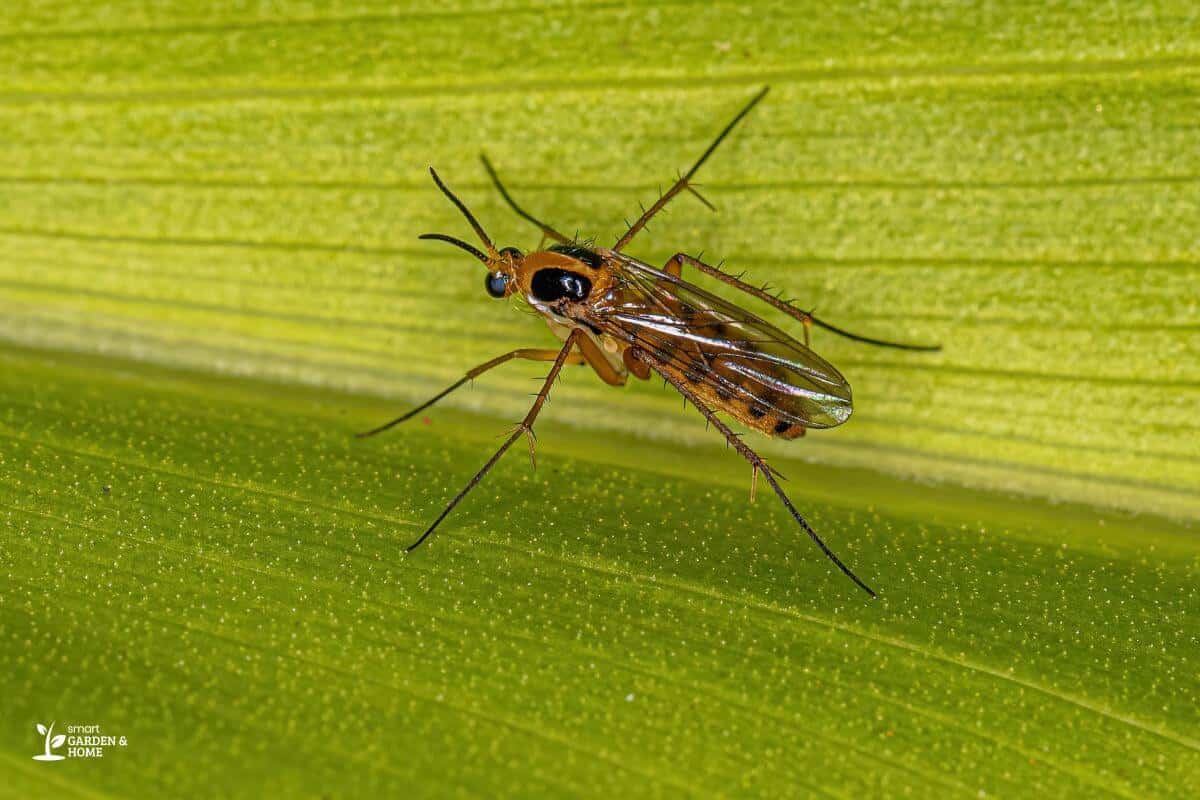
Fungus gnats are small winged insects. They usually feast on decomposing organic matter as well as fungi and algae. They can also turn to plant roots as an extra source of food.
If you are unsure if you have a fungus gnat infestation, you can place potato slices on top of the soil. The raw potato will attract them to come out.
Fungus gnats are particularly dangerous for spider plants because they can transmit diseases such as root rot.
Adult fungus gnats have a short lifespan of about a week. However, along with that comes 200 eggs that female gnats can potentially lay.
Fungus gnats may become attracted to spider plants if they have been watered too much, especially during winter. Wet soil and peat moss are perfect for them to lay their eggs in.
Another condition that can attract these pests is the presence of dead plant parts or an excess in organic fertilizer.
An effective organic treatment for fungus gnats is the use of parasitic nematodes specialized in attacking these insects, such as Steinernema feltiae. These beneficial nematodes enter the maggots’ bodies and kill them in a few days.
They are also useful to prevent future heavy infestations since they reproduce and persist in the soil. Consider repotting your spider plant before treatment to take full advantage.
Other beneficial species that can be used in tandem with nematodes are the soil-dwelling mites Stratiolaelaps scimitus and predatory rove beetles Dalotia coriaria.
4. Spider Mites
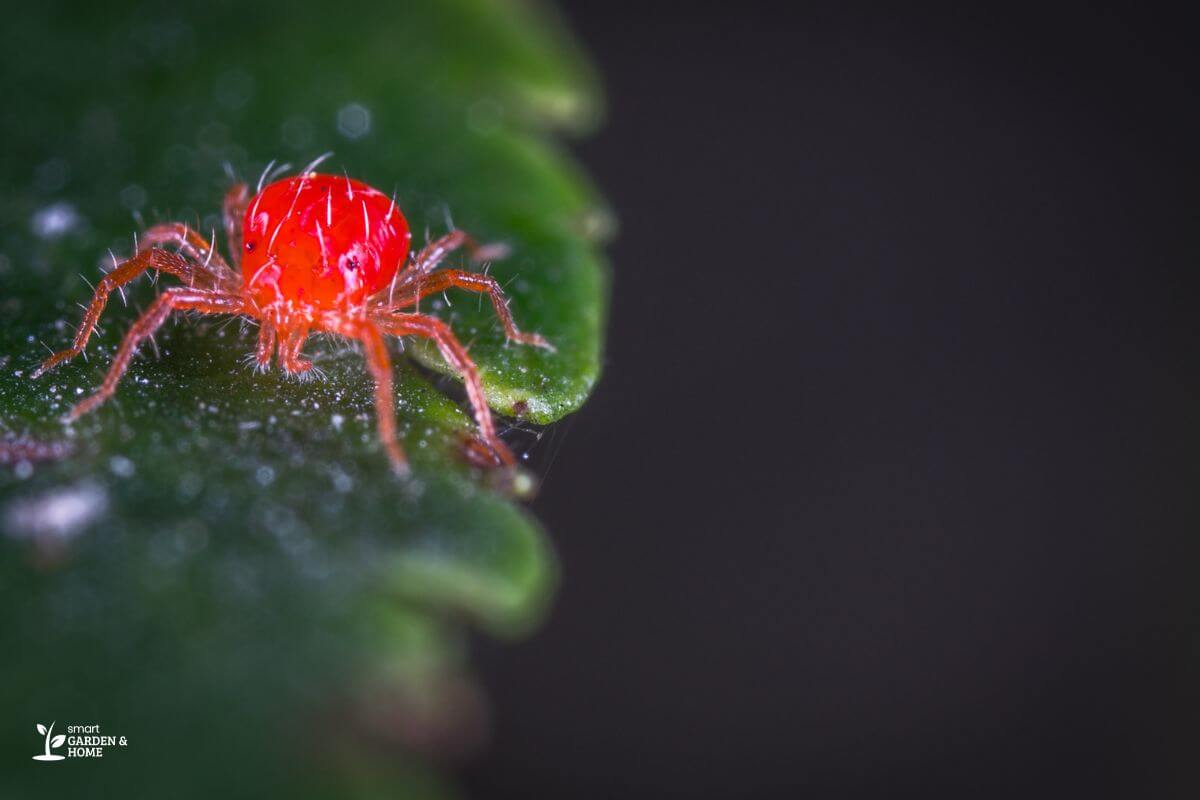
Spider mites might be attracted to spider plants that are kept outside in the summer, as they thrive in hot and dry environments. Their ideal environment also occurs in certain homes during winter when heating dries the air excessively.
Spider mites are insects that feed on plant fluids. But they can easily be washed away with warm water or sprayed with insecticidal soap using a spray bottle.
A tablespoon of neem oil mixed with a quart of water can also be applied to the entire plant and the undersides of the leaves to eliminate spider mites.
These arachnids have plenty of natural predators that are available for purchase, such as predatory mites like Amblyseius andersoni, Amblyseius californicus, and Phytoseiulus persimilis. Soldier bugs and predatory thrips are also an option.
5. Scales
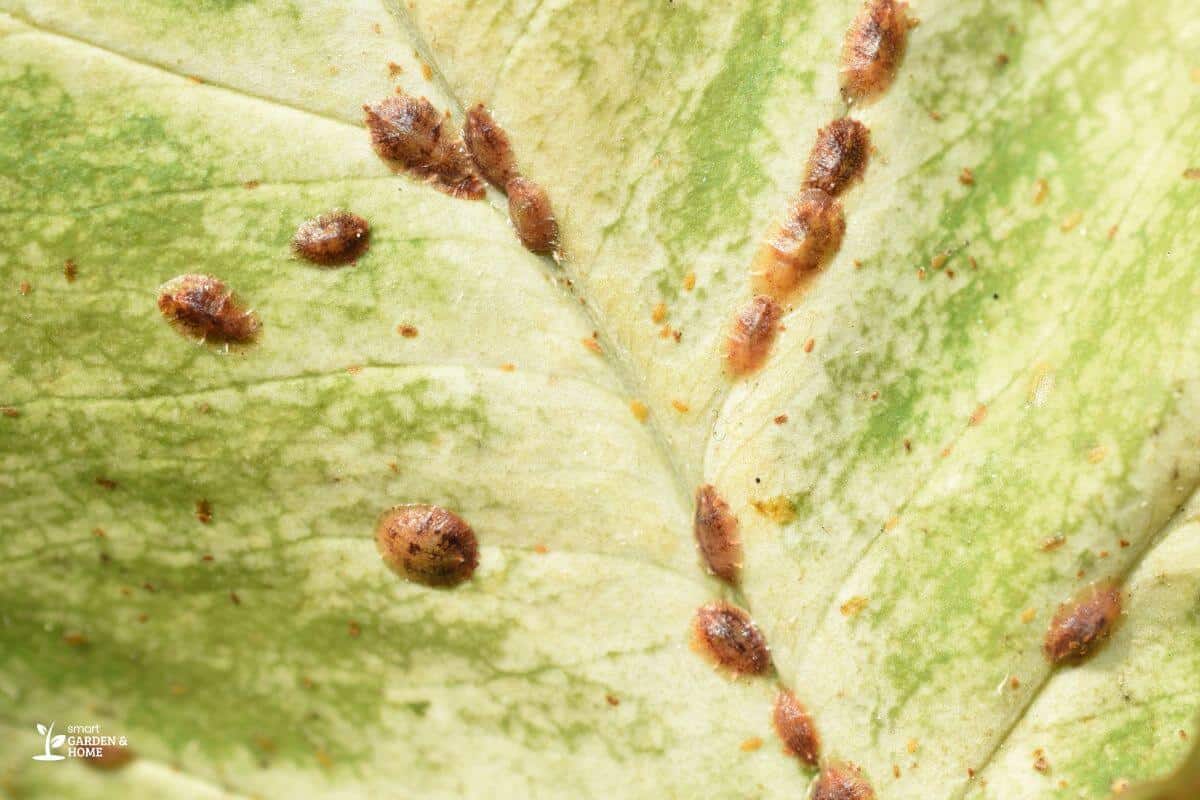
Scale insects appear as tiny shell-like bumps on spider plants and attach to the undersides of leaves, stems, and plantlets. They feed from plant sap and can cause leaves to yellow and wither.
These types of insects have a mobile phase when they are most vulnerable but after they attach to the leaves they form a protective structure that makes them harder to kill.
Scale insects are often a problem for indoor plants, particularly during the winter. They will attack your spider plant if it’s in a weakened condition, most likely due to inadequate light or a nitrogen excess.
To avoid this and other problems, spider plants should never be fertilized during the winter.
Just like a majority of spider plant pests, scale insects can be controlled by spraying them with insecticidal soap or neem oil (or another horticultural oil).
Light infestations can be taken care of by rubbing 70 percent isopropyl alcohol on the infected parts. Lady beetles, soldier beetles, and parasitic wasps are effective methods to control most scale bugs.
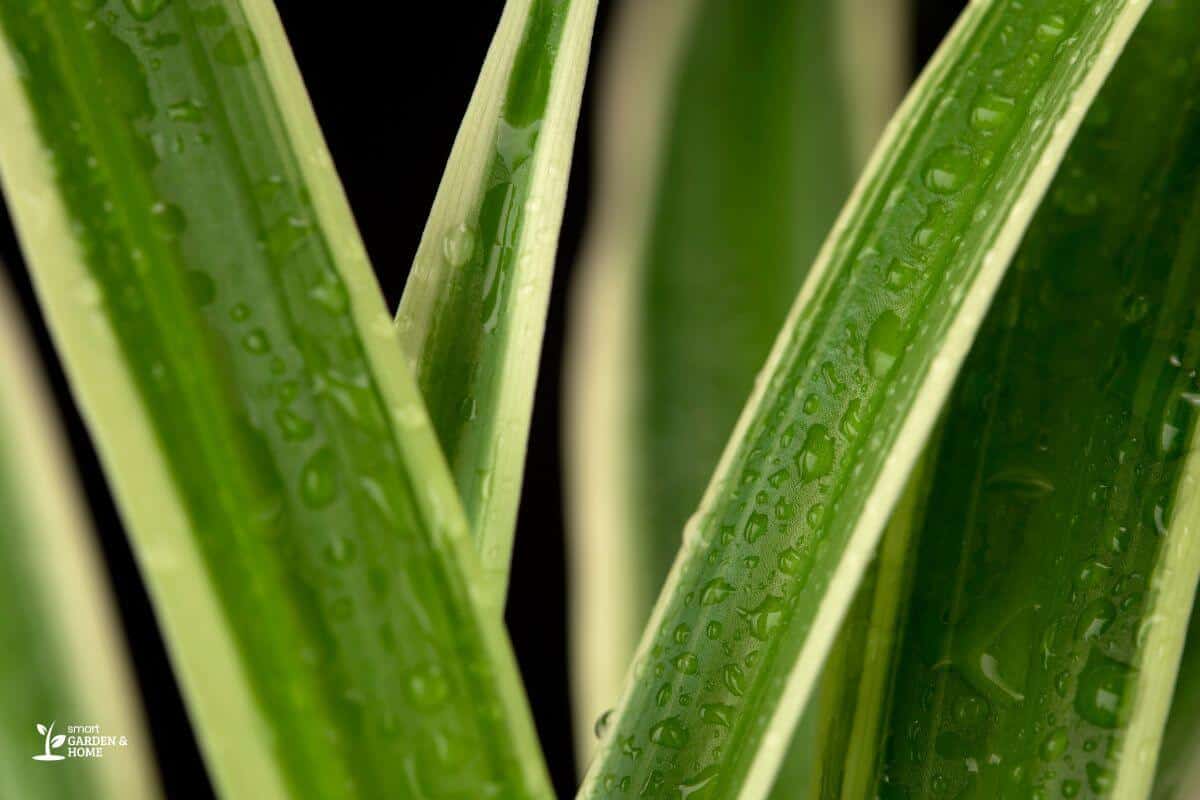
Tips to Keep Spider Plant Bugs Away
- Check your spider plant regularly and take care of pests as soon as you spot them
- Keep your spider plant healthy by providing the right conditions for it to thrive
- Mist your spider plant regularly to create their ideal environment
- Avoid overwatering, as many pests love saturated conditions
- Repot regularly to ensure the potting soil maintains a good drainage
- Cover the soil with half an inch of dry material to create a surface where bugs can’t lay their eggs
- Avoid overfertilizing with organic material and don’t fertilize during the winter
- Remove any dead plant parts to avoid providing extra food for bugs
Final Thoughts on Spider Plant Bugs
Spider plant bugs can be an annoying problem, but thankfully there are a few steps you can take to prevent and get rid of them.
First off, check your spider plant regularly for signs of pests and act quickly to treat the problem.
Maintaining healthy plants by providing the right conditions for them to thrive is also important in avoiding pest infestations. These houseplants love bright indirect light.
Make sure you mist your spider plant regularly so that it has the proper humidity, and repot periodically to promote optimal drainage.
Additionally, it’s best to avoid overwatering and overfertilizing with organic material, as both can attract spider plant pests.
Lastly, make sure you remove any dead plant parts from your spider plant to ensure they don’t serve as food sources.
Before using chemical pesticides that are harmful to both humans and the environment, practice prevention methods such as maintaining a clean space first. Try using organic solutions next. Use chemical pesticides only as a last resort.
If you liked this article on spider plant bugs, check out our other interesting articles:
- Spider Plant Watering Schedule
- How Long Does Spider Plant Live
- Spider Plant Issues
- Do Spider Plants Keep Spiders Away
- Leggy Spider Plant
Sources:

